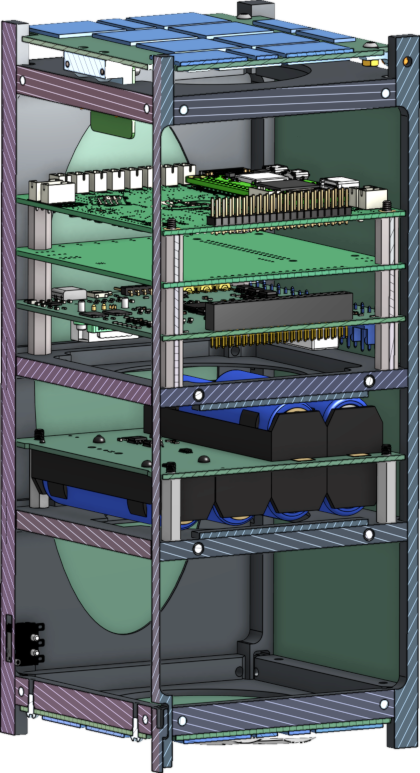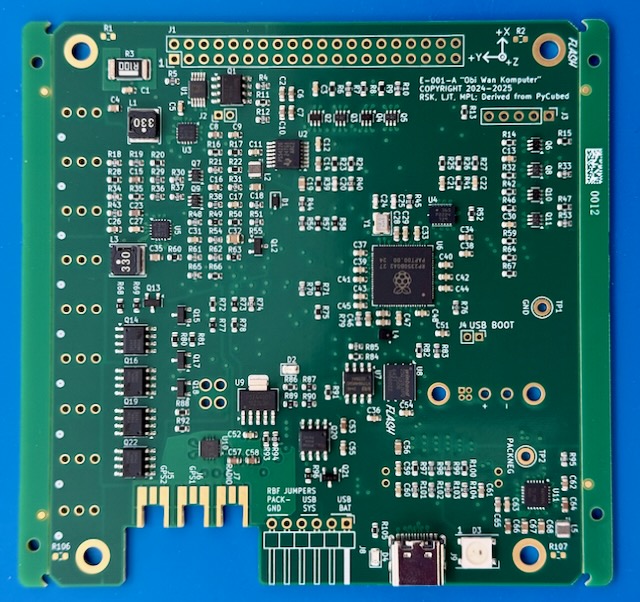NyanSat Avionics Overview
Avionics, a portmanteau of “aviation electronics,” are essential for the functionality of any satellite, including NyanSat. Without a reliable power and electronics system, communication with Earth becomes impossible, and our missions would be more implausible than a Tom Cruise action movie. NyanSat features four distinct circuit boards in its central stack, each with unique roles: the On-Board Computer (OBC), the battery board, the Combined Payload Board (CPB), and the NCAR board.

The OBC serves as the “brain” of the satellite, overseeing critical functions such as controlling the radio, GPS, and burn wire, which enables the spacecraft to achieve its orbital configuration. Additionally, the OBC regulates the overall performance of the electronics and includes a watchdog timer to monitor and reset the system if issues arise.
The Combined Payload Board (CPB) supports the satellite’s diverse missions. It handles five key functionalities: ADACS (Attitude Determination and Control System), deployables, material science experiments, acoustic spacecraft sounding, and the camera. The ADACS system works with the magnetorquer to ensure proper spacecraft orientation, enhancing the functionality of the camera, which is part of our educational outreach mission. The CPB also interacts with deployables like antennae and collaborates with the OBC for redundancy.
The NCAR board is a collaboration with the National Center for Atmospheric Research, integrating their payload into NyanSat to support additional scientific objectives. More details to come on this board.
The battery board manages power distribution, ensuring stable voltage and current to other components. Equipped with six lithium-ion battery cell holders, it regulates power inflow and outflow to prevent overcharging or insufficient power, which could lead to system failure. Solar panels on the spacecraft’s exterior provide power, but the batteries are sensitive to temperature fluctuations. To mitigate this, the magnetorquer, which generates excess heat during operation, is mounted on the battery board to help maintain optimal battery temperature.
We have also designed the exterior panels that will gather solar power for the satellite. These are also circuit boards, that use solar cells to convert light into electricity. Packing the cells to cover as much of the panel as possible is a challenge, as the cells are only available in a few different sizes and must be arranged in series and parallel to achieve the desired voltage and current.



